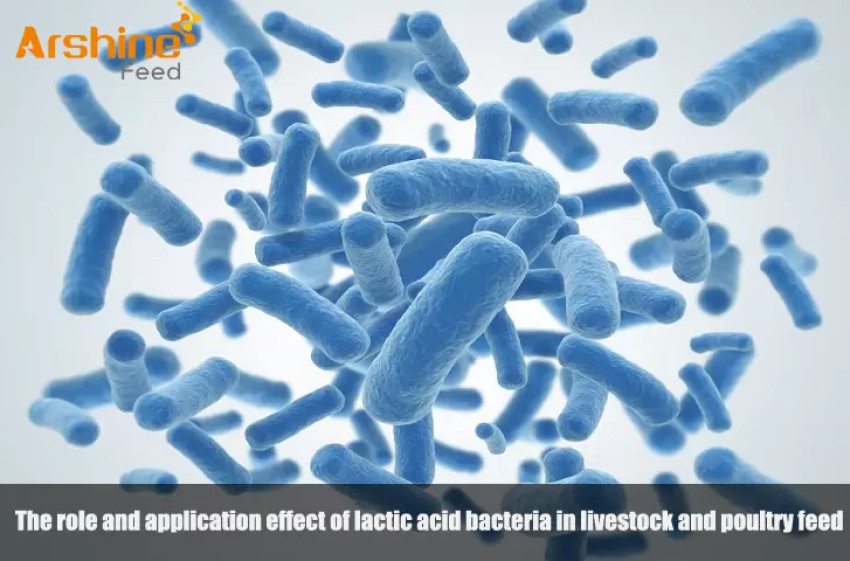
When it comes to lactic acid bacteria, the first impression is all kinds of high-quality yogurt and various yogurts; in fact, lactic acid bacteria are widely used, and people’s research on lactic acid bacteria has reached a certain level; then in addition to human lactic acid bacteria, animal breeding, animal husbandry Do you use lactic acid bacteria? The answer is yes, lactic acid bacteria are also ideal for adding to livestock and poultry. Today, follow the editor of Golden Lily Bio to learn about the role and application of lactic acid bacteria in livestock and poultry feed.
The lactic acid bacteria feed additive is a live bacteria freeze-dried powder preparation prepared by microbial fermentation, vacuum freeze-drying, and then preparation. It contains a variety of natural lactic acid bacteria, enzyme preparations and micronutrients. Lactic acid bacteria are the main probiotics in animals and can be widely used in animal feeding, animal feed and silage.
1. What is the role of lactic acid bacteria?
Lactic acid bacteria can perform many physiological functions in animals. A large number of research data show that lactic acid bacteria can promote the growth of animals, regulate the normal flora of the gastric canal, maintain the micro-ecological balance, thereby improving the function of the gastrointestinal tract. Improve food digestibility and biological potency. Lower serum cholesterol, control endotoxin. Inhibit the growth of spoilage bacteria in the intestinal tract, improve the body's immunity, etc. The organic acids, special enzymes, bacterial surface components and other substances produced by lactic acid bacteria through fermentation have physiological functions, can stimulate tissue development, and have effects on the nutritional status, physiological functions, immune responses, and stress responses of the body. It replaces the addition of antibiotics in feed, eliminates drug residues, and purifies the human food chain.
Provide nutrients and promote the growth of the body If lactic acid bacteria can normally exert metabolic activity in the body, they can directly provide the host with available essential amino acids and various vitamins, and can also improve the biological activity of mineral elements, thereby achieving the provision of essential nutrients for the host , enhance the nutritional metabolism of animals, and promote their growth.
Improve gastrointestinal function. In terms of their functions, they can be divided into 3 categories. The symbiotic type, mainly facultative anaerobic bacteria, in the ecological balance, its vitamin and protein synthesis, digestion and absorption, biological antagonism and immunity and other functions are beneficial to the host; site, so as not to make the host sick. If it is out of control, it will lead to adverse reactions of the host; the intermediate type, that is, it has both physiological and pathogenic effects. The balance of microbiota is very important to the health of the body, and lactic acid bacteria can regulate this micro-ecological balance to ensure the normal physiological state of the host. Lactic acid bacteria are common bacteria in the intestinal tract. After livestock and poultry take lactic acid bacteria, they can change the intestinal environment, inhibit the reproduction of harmful bacteria, and adjust the balance of gastrointestinal flora. Lactic acid bacteria are closely combined with intestinal mucosal cells through adhesin, colonize and occupy space on the intestinal mucosal surface, and become the main component of the physiological barrier, so as to restore host resistance, repair the intestinal flora barrier, and cure intestinal diseases. If the barrier is damaged by antibiotics or other factors, the host loses its resistance to foreign bacteria, which will cause the abnormal proliferation of drug-resistant intestinal bacteria and replace the position of dominant bacteria, resulting in the imbalance of the intestinal microecological balance.
Lactobacillus and Bifidobacterium can not only activate the phagocytosis of macrophages, but also colonize the intestinal tract, which is equivalent to natural autoimmunity. They can also stimulate peritoneal macrophages, induce the production of interferon, promote cell division, produce antibodies and promote cellular immunity, etc., so they can enhance the body's non-specific and specific immune responses and improve the body's disease resistance.
Research data show that lactic acid bacteria have a good inhibitory effect on some spoilage bacteria and low-temperature bacteria. It can be used to prevent and treat diarrhea, dysentery, enteritis, constipation and various diseases caused by intestinal dysfunction, as well as skin inflammation. Its antibacterial mechanism is mainly manifested in the following aspects. The organic acids such as lactic acid produced can significantly reduce the pH value of the environment, making the intestines in an acidic environment, and have an antagonistic effect on pathogenic bacteria, such as Shigella, typhoid bacillus, paratyphoid bacillus, campylobacter, staphylococcus, etc.; Hydrogen peroxide can activate the "catalase-thiocyanate" system in milk, inhibit and kill Gram-negative bacteria and catalase-positive bacteria, such as Pseudomonas, Escherichia coli and Salmonella ; Produce small proteins or peptides similar to bacteriocins, such as various lactobacilli and bifidobacteria, which have antagonistic effects on Staphylococcus, Clostridium, Salmonella and Shigella. In addition, bifidobacteria, etc. can also decompose the combined bile acid into free creatine, which has a stronger inhibitory effect on bacteria than the former.
2. The application effect of lactic acid bacteria
According to the experiment, the incidence of diarrhea in chicks decreased by 30.0%, the mortality rate decreased by 35.0%, the growth rate of chicks increased by more than 10.0%, the daily weight gain rate of broilers increased by 12.0%, the egg production rate of laying hens increased by 12.2%, and the average egg weight An increase of 1.06 grams resulted in an 18% increase in feed conversion.
The incidence of yellow and white diarrhea of piglets decreased by 69.5%, the daily weight gain rate increased by 6.5%, the feed conversion rate increased by 23.0%, the dry matter output decreased by 13.5%, and the nitrogen output decreased by 21.0%.
Reduce the number of E. coli in the intestinal tract of cattle and the incidence of diarrhea, increase the daily weight gain rate of beef cattle by 13.2%, and increase the average daily milk production of dairy cows by 1.8 kg.
The effect is best on young livestock and poultry, which can greatly reduce morbidity and mortality and increase growth rate. When livestock and poultry are in a state of stress, such as changing feed, weaning, transportation, high temperature, cold, disease, etc., the application effect is obvious, reducing morbidity and mortality. When young animals and young poultry are fed or when there are many pathogens and harmful microorganisms in the intestinal tract of livestock and poultry, antibiotics are used first, and then lactic acid bacteria feed additives are given to make the intestinal microecological balance dominant.
https://www.arshinefeed.com/Knowledge/the-role-and-application-effect-of-lactic-acid-bacteria-in-livestock-and-poultry-feed




